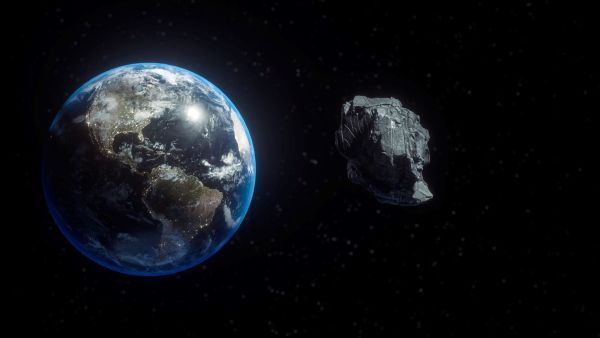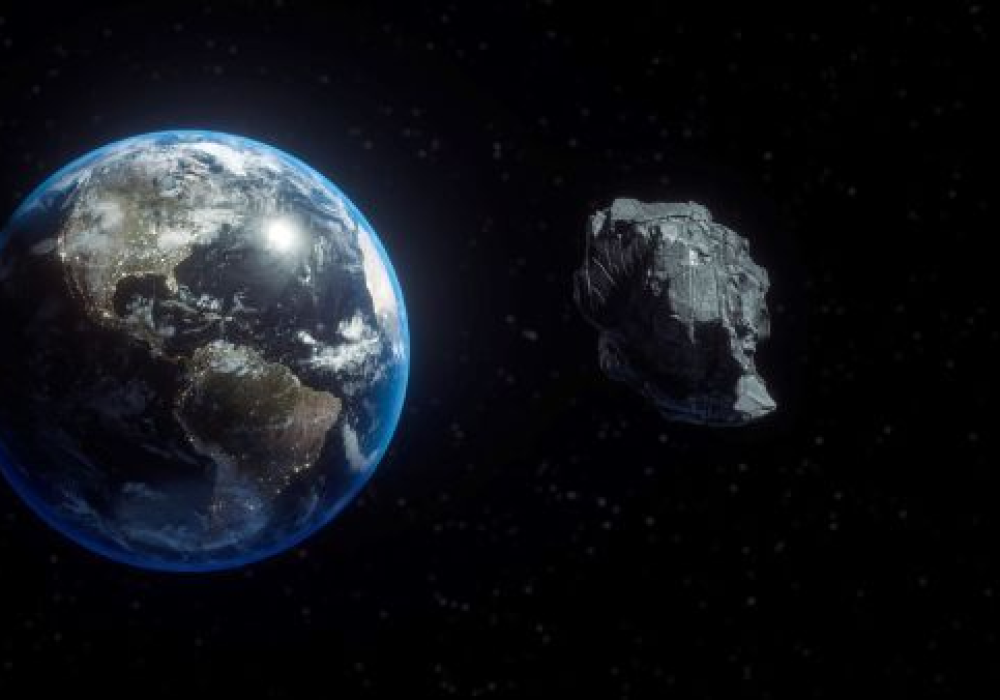A huge asteroid will safely whiz by our planet next week.
The asteroid, known as 7482 (1994 PC1), will make its closest approach to our planet on Jan. 18 at 4:51 p.m. EST (2151 GMT), according to a table from the Center for Near-Earth Object Studies (CNEOS), managed by NASA at the agency’s Jet Propulsion Laboratory in California.
The 3,400-foot (1 kilometer) asteroid will zoom by our planet at the equivalent of five lunar distances at its closest approach, the table indicates, at a top speed of nearly 12 miles per second (20 km/s). At this distance, this will be a safe flyby, and the closest one the asteroid will make of Earth in the next 200 years, according to EarthSky.
Related: Top 10 ways to destroy Earth
Asteroids are space rocks that are leftovers of the early solar system when our neighborhood was filled with objects like it. Tens of thousands of asteroids exist but only a subset of them pass close enough to Earth to be termed near-Earth objects (NEOs). The 7482 (1994 PC1) flyby is thus very typical of the several dozen or so typical Earth flybys reported by media every year.
Any asteroids or comets (which can be very loosely defined as icy space rocks that are trailed by a tail) that come within 1.3 astronomical units (120.9 million miles, or 194.5 million km) qualify as NEOs, NASA says. The agency had a mandate from Congress to seek and report at least 90 percent of all NEOs 460 feet (140 meters) and larger by the end of 2020, following up from an earlier request to find even larger objects.
While NASA hasn’t yet fulfilled that goal, it does have a network of partner telescopes on the ground and in space continuing to work to find and monitor NEOs, managing efforts of potentially hazardous ones through the agency’s Planetary Defense Coordination Office. We have no impending asteroids to worry about now, but the agency continues looking and is testing defense technology to address any possible future threats.
NASA recently launched a mission called Double Asteroid Redirection Test (DART) that will seek to alter the path of an asteroid’s moonlet in the fall of 2022. Another mission, called OSIRIS-REx (Origins-Spectral Interpretation-Resource Identification-Security-Regolith Explorer), is en route from asteroid Bennu with an asteroid sample, which may help with future asteroid composition studies and aid defense measures.
As for seeking out new asteroids, NASA is aiming to put a dedicated mission into space by 2026, called NEO Surveyor. The agency says that in the decade after launch, NEO Surveyor should meet the Congressional request to seek out 90 percent of all NEOs 460 feet (140 meters) and larger.
Follow Elizabeth Howell on Twitter @howellspace. Follow us on Twitter @Spacedotcom and on Facebook.










